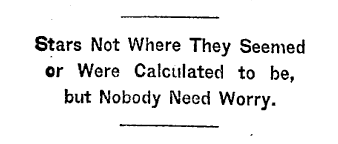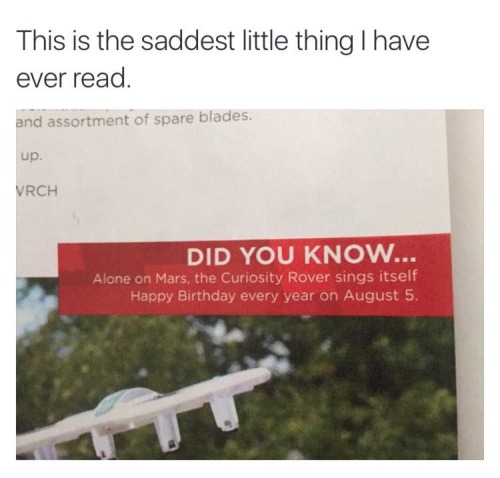The Stereoscope Was The VR Headset Of The 19th Century.

The stereoscope was the VR headset of the 19th century.
British scientist Charles Wheatstone developed the first stereoscope in 1838, using side-by-side images and prismatic lenses. By showing the subject from two slightly different angles, the viewer’s brain is tricked into perceiving depth and being immersed in the scene.
This stereoscope was manufactured around 1900 by Brevetés Paris and is in our @cooperhewitt, which has a variety of stereoscope slides in its collection, including depictions of historical moments and camels at the zoo in London.
More Posts from Stubborn-turtle-blog and Others



House With Unique Pivoting Door
Architects- Diego Guayasamin Arquitectos Location- Quito, Ecuador Images- Sebastián Crespo Source- contemporist
*for design inspiration, follow @designismymuse

How is the source for this returnofkings, a MRA site?
If men stopped working…the world would continue on.
If women stopped working, then things would get ugly.

Bacteriophage. This is one of a few pieces I’ve submitted to a gallery show I’m having with my friends/coworkers at Tr!ckster in Berkeley. Tried a somewhat different approach than my usual on this one, and I like it.
Probably will have little prints available soon.
Two New Missions to Explore the Early Solar System
We’ve got big science news…!

We’ve just added two more science missions to our lineup! The two selected missions have the potential to open new windows on one of the earliest eras in the history of our solar system – a time less than 10 millions years after the birth of our sun.

The missions, known as Lucy and Psyche, were chosen from five finalists and will proceed to mission formulation.
Let’s take a dive into each mission…
Lucy
Lucy, a robotic spacecraft, will visit a target-rich environment of Jupiter’s mysterious Trojan asteroids. Scheduled to launch in October 2021, the spacecraft is slated to arrive at its first destination, a main asteroid belt, in 2025.

Then, from 2027 to 2033, Lucy will explore six Jupiter Trojan asteroids. These asteroids are trapped by Jupiter’s gravity in two swarms that share the planet’s orbit, one leading and one trailing Jupiter in its 12-year circuit around the sun. The Trojans are thought to be relics of a much earlier era in the history of the solar system, and may have formed far beyond Jupiter’s current orbit.
Studying these Trojan asteroids will give us valuable clues to deciphering the history of the early solar system.
Psyche
The Psyche mission will explore one of the most intriguing targets in the main asteroid belt – a giant metal asteroid, known as 16 Psyche, about three times farther away from the sun than is the Earth. The asteroid measures about 130 miles in diameter and, unlike most other asteroids that are rocky or icy bodies, it is thought to be comprised of mostly metallic iron and nickel, similar to Earth’s core.

Scientists wonder whether psyche could be an exposed core of an early planet that could have been as large as Mars, but which lost its rocky outer layers due to a number of violent collisions billions of years ago.

The mission will help scientists understand how planets and other bodies separated into their layers early in their histories. The Psyche robotic mission is targeted to launch in October of 2023, arriving at the asteroid in 2030, following an Earth gravity assist spacecraft maneuver in 2024 and a Mars flyby in 2025.
Get even more information about these two new science missions HERE.
Make sure to follow us on Tumblr for your regular dose of space: http://nasa.tumblr.com
Stay safe, you guys

Live wind map of hurricane Matthew – expected to make landfall in FL late tomorrow
Constellations and the Calendar
Did you recently hear that NASA changed the zodiac signs? Nope, we definitely didn’t…
…Here at NASA, we study astronomy, not astrology. We didn’t change any zodiac signs, we just did the math. Here are the details:
First Things First: Astrology is NOT Astronomy…
Astronomy is the scientific study of everything in outer space. Astronomers and other scientists know that stars many light years away have no effect on the ordinary activities of humans on Earth.
Astrology is something else. It’s not science. No one has shown that astrology can be used to predict the future or describe what people are like based on their birth dates.

Some curious symbols ring the outside of the Star Finder. These symbols stand for some of the constellations in the zodiac. What is the zodiac and what is special about these constellations?

Imagine a straight line drawn from Earth though the sun and out into space way beyond our solar system where the stars are. Then, picture Earth following its orbit around the sun. This imaginary line would rotate, pointing to different stars throughout one complete trip around the sun – or, one year. All the stars that lie close to the imaginary flat disk swept out by this imaginary line are said to be in the zodiac.

The constellations in the zodiac are simply the constellations that this imaginary straight line points to in its year-long journey.
What are Constellations?
A constellation is group of stars like a dot-to-dot puzzle. If you join the dots—stars, that is—and use lots of imagination, the picture would look like an object, animal, or person. For example, Orion is a group of stars that the Greeks thought looked like a giant hunter with a sword attached to his belt. Other than making a pattern in Earth’s sky, these stars may not be related at all.

Even the closest star is almost unimaginably far away. Because they are so far away, the shapes and positions of the constellations in Earth’s sky change very, very slowly. During one human lifetime, they change hardly at all.
A Long History of Looking to the Stars
The Babylonians lived over 3,000 years ago. They divided the zodiac into 12 equal parts – like cutting a pizza into 12 equal slices. They picked 12 constellations in the zodiac, one for each of the 12 “slices.” So, as Earth orbits the sun, the sun would appear to pass through each of the 12 parts of the zodiac. Since the Babylonians already had a 12-month calendar (based on the phases of the moon), each month got a slice of the zodiac all to itself.

But even according to the Babylonians’ own ancient stories, there were 13 constellations in the zodiac. So they picked one, Ophiuchus, to leave out. Even then, some of the chosen 12 didn’t fit neatly into their assigned slice of the pie and crossed over into the next one.

When the Babylonians first invented the 12 signs of zodiac, a birthday between about July 23 and August 22 meant being born under the constellation Leo. Now, 3,000 years later, the sky has shifted because Earth’s axis (North Pole) doesn’t point in quite the same direction.

The constellations are different sizes and shapes, so the sun spends different lengths of time lined up with each one. The line from Earth through the sun points to Virgo for 45 days, but it points to Scorpius for only 7 days. To make a tidy match with their 12-month calendar, the Babylonians ignored the fact that the sun actually moves through 13 constellations, not 12. Then they assigned each of those 12 constellations equal amounts of time.
So, we didn’t change any zodiac signs…we just did the math.
Make sure to follow us on Tumblr for your regular dose of space: http://nasa.tumblr.com

Surgeon Al-Zahrawi (936–1013 CE) from Cordoba in the Muslim kingdom of al-Andalus, was one of the most famous physicians of the middle ages. He invented many medical instruments, and wrote the first surgical textbook which included illustrations like the one above. It was not just a textbook, however. The Kitab al-Tasrif is a 30-chapter treatise on multiple areas of medicine, including surgery, dentistry, and childbirth.
-
 queerhistorymajor liked this · 4 years ago
queerhistorymajor liked this · 4 years ago -
 dragonitesforhope reblogged this · 5 years ago
dragonitesforhope reblogged this · 5 years ago -
 whim-without-gumption reblogged this · 6 years ago
whim-without-gumption reblogged this · 6 years ago -
 cmdr-dr-blog liked this · 6 years ago
cmdr-dr-blog liked this · 6 years ago -
 minakat reblogged this · 6 years ago
minakat reblogged this · 6 years ago -
 minakat liked this · 6 years ago
minakat liked this · 6 years ago -
 sethevans495 liked this · 6 years ago
sethevans495 liked this · 6 years ago -
 zeehasablog reblogged this · 6 years ago
zeehasablog reblogged this · 6 years ago -
 eventual-20-twenty reblogged this · 6 years ago
eventual-20-twenty reblogged this · 6 years ago -
 zeehasablog liked this · 6 years ago
zeehasablog liked this · 6 years ago -
 kimbermcleod reblogged this · 6 years ago
kimbermcleod reblogged this · 6 years ago -
 kimbermcleod liked this · 6 years ago
kimbermcleod liked this · 6 years ago -
 chilegrande liked this · 6 years ago
chilegrande liked this · 6 years ago -
 luiz40jan liked this · 6 years ago
luiz40jan liked this · 6 years ago -
 brekfastsoup liked this · 7 years ago
brekfastsoup liked this · 7 years ago -
 75mar-blog liked this · 7 years ago
75mar-blog liked this · 7 years ago -
 letseatnudels liked this · 7 years ago
letseatnudels liked this · 7 years ago -
 t41y4k1-n-a-m-r liked this · 7 years ago
t41y4k1-n-a-m-r liked this · 7 years ago -
 fweshlux reblogged this · 8 years ago
fweshlux reblogged this · 8 years ago -
 fw3shestyetnow liked this · 8 years ago
fw3shestyetnow liked this · 8 years ago -
 ninjai74 liked this · 8 years ago
ninjai74 liked this · 8 years ago -
 oruamatrop-blog liked this · 8 years ago
oruamatrop-blog liked this · 8 years ago -
 darkfetishscorpio liked this · 8 years ago
darkfetishscorpio liked this · 8 years ago -
 insidewarp reblogged this · 8 years ago
insidewarp reblogged this · 8 years ago -
 zekedms reblogged this · 8 years ago
zekedms reblogged this · 8 years ago -
 justablog129-blog reblogged this · 8 years ago
justablog129-blog reblogged this · 8 years ago -
 spaceintruderdetector liked this · 8 years ago
spaceintruderdetector liked this · 8 years ago -
 35mmninja liked this · 8 years ago
35mmninja liked this · 8 years ago -
 cyborg-dreams reblogged this · 8 years ago
cyborg-dreams reblogged this · 8 years ago -
 onlymineushit-blog reblogged this · 8 years ago
onlymineushit-blog reblogged this · 8 years ago -
 oreoorva liked this · 8 years ago
oreoorva liked this · 8 years ago -
 dennispflores liked this · 8 years ago
dennispflores liked this · 8 years ago -
 bangla-books-pdf liked this · 8 years ago
bangla-books-pdf liked this · 8 years ago -
 focalgirl liked this · 8 years ago
focalgirl liked this · 8 years ago -
 youngcatharsis11-blog liked this · 8 years ago
youngcatharsis11-blog liked this · 8 years ago -
 wolfsong reblogged this · 8 years ago
wolfsong reblogged this · 8 years ago -
 sunrayyellowhalo reblogged this · 8 years ago
sunrayyellowhalo reblogged this · 8 years ago -
 brevardmuseum-blog liked this · 8 years ago
brevardmuseum-blog liked this · 8 years ago -
 wolfsong liked this · 8 years ago
wolfsong liked this · 8 years ago -
 ebunz reblogged this · 8 years ago
ebunz reblogged this · 8 years ago -
 kazimir76 reblogged this · 8 years ago
kazimir76 reblogged this · 8 years ago -
 kazimir76 liked this · 8 years ago
kazimir76 liked this · 8 years ago
Gaming, Science, History, Feminism, and all other manners of geekery. Also a lot of dance
243 posts

